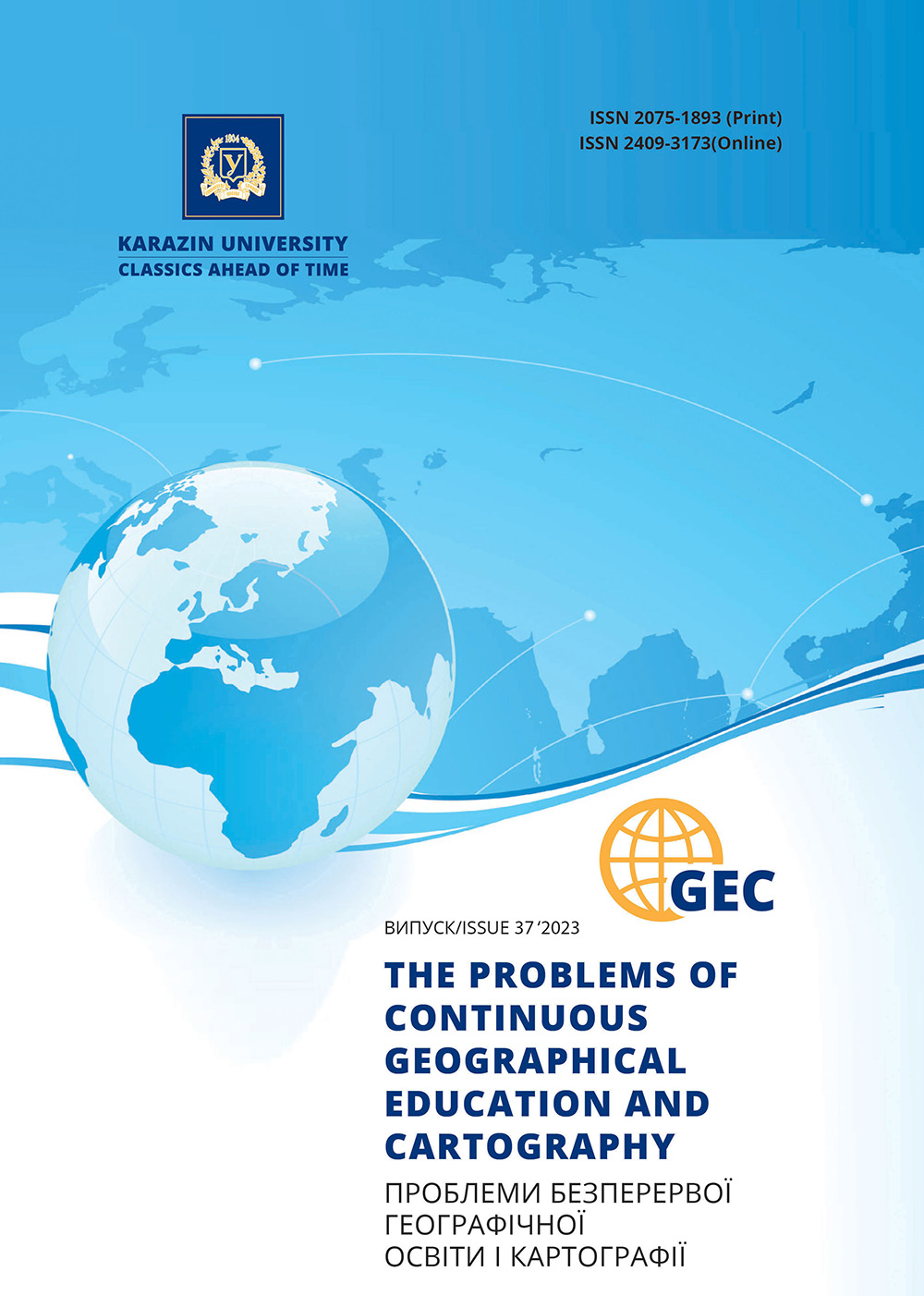Cases of mass distribution of wet snow deposits DP (dangerous phenomena) and SHP (spontaneous phenomena) categories in the territory of Ukraine during certain decades in the period 1991-2020
Abstract
The article studies mass distribution of cases of wet snow deposits formation of the DP (dangerous phenomena) and SHP (spontaneous phenomena) categories on the territory of Ukraine during the cold period of the year and certain months of the transitional seasons in separate decades of the period 1991-2020. As a case study, we used the observation period of mass distribution of wet snow on 1 date at no less than 2 regions, and for cases of mass deposits of wet snow of the category DP or SHP from 1 day to several days in a row in the territory of at least 2 regions.
Materials and methods. The research used the materials of instrumental observations on the wires of a standard ice machine at all meteorological stations of Ukraine for the last thirty years. We show the distribution of such cases by individual months and years of the specified periods and determine their recurrence. The main research method is the empirical-statistical method.
The purpose of the study. Currently, an unresolved issue in the distribution of dangerous and spontaneous manifestations of ice-frost deposits is their modern manifestation on the territory of Ukraine at the current stage of climate change and the establishment of trends in their territorial distribution. The purpose of the study is to determine distribution features in cases of mass accumulation of sea snow on the territory of Ukraine at the current stage of climate change.
The main results of the study. We established a tendency showing that the largest deposits of wet snow sticking of the DP (dangerous phenomena) category was in the second and third decades of the studied period. In the months of the cold period, such cases are mostly in January and December, somewhat less in February and November. In spring (April) and mid-autumn (October), the number of such cases is insignificant and does not exceed 2-4 cases, but during 2001-2010, their number decreased to one case in each of these months. We noticed that in the second decade (2001-2010), the number of wet snow deposits increased significantly in February and March, but decreased in April and October, compared to the other two decades. Cases of sleet deposits of the SHP (spontaneous phenomena)) category were in all studied decades. They were mainly in the winter months, mostly in January, February and December, but did not occur in October. In April, there was only one case of such deposits 2011-2020. A trend established a certain increase in the number of cases of wet snow deposits in the territory of Ukraine for the last two decades compared to the first decade.
Downloads
References
Boychenko, S.G., Voloshchuk, V.M., Doroshenko, I.A. (2000). Global warming and its consequences for the territory of Ukraine. Ukrainian Geogr. Magazine, 3, 59-68 [In Ukrainian].
Voloshchuk, V.M. (1993). About possible changes in the average annual temperature regime of Ukraine in the first half of the 21st century. Reports of the National Academy of Sciences of Ukraine, 12, 105-111 [In Ukrainian].
Voloshchuk, V.M. (1997). The reaction of the course of the surface temperature of Ukraine to the global warming of the climate. Reports of the National Academy of Sciences of Ukraine, 9, 113-118 [In Ukrainian].
Governing document KD 52.32.03-13. Code for the transmission of storm warnings about actual dangerous and spontaneous hydrometeorological phenomena (WAREP code). National RF/WAREP regional coding procedure (2013). Part I Meteorological and agrometeorological phenomena. Part II Marine hydrometeorological phenomena. Kyiv, 45 [In Ukrainian].
Climate of Ukraine (2003). Eds. V.M., Lipinsky, V.A., Dyachuk, V.M., Babichenko (2003). Kyiv: Publ. Raevsky, 343 [In Ukrainian].
Climate Change 2007: Impacts, Adaptation, and Vulnerability (2007). In: Contribution of working Group II to the Forth Assessment Report of the Intergovernmental Panel on Climate Change. M., Parry, O., Canziani, J., Palutkof, et al. (eds.). - New York, Cambridge University Press, 976 [in English].
Climate of Europe (1995). Regent variation, present state and future prospects. ECSN, 72 [in English].
Instructions to hydrometeorological stations and posts. Governing document. Issue 3 (2011). Part I. Meteorological observations at stations. State hydrometeorological service. Kyiv, 279 [in Ukrainian].
Pyasetska, S.I., Grebenyuk, N.P. (2022). The current state of changes in the average monthly air temperature in the months of the cold period of the year during 1991-2020 relative to the climatological norm of 1961-1990. Sustainable development: environmental protection. Energy saving. Balanced nature management. Collection of materials of the VII International Congress October 12-14, 2022. Ukraine, Lviv, 25.DOI https://doi.org/10.51500/7826-07-0 [In Ukrainіan].
Pyasetska, S.I., Shcheglov, O.A., Grebenyuk, N.P. Comparison of fields of average monthly air temperature during the climatic norms of 1991-2020 relative to 1961-1990. Collective monograph. Under the editorship M.S. Painted. - K.: Yaroshenko Ya.V. - 2022. - P. 202-228. DOI https://doi.org/10.51500/7826-23-0. [In Ukrainіan].
Natural meteorological phenomena on the territory of Ukraine for the last twenty years (1986-2005). Eds. V.M., Lipinskii, V.I., Osadchy, V.M., Babichenko (2006). Kyiv: Nika Center Publishing House, 311 [In Ukrainian].

This work is licensed under a Creative Commons Attribution 4.0 International License.





